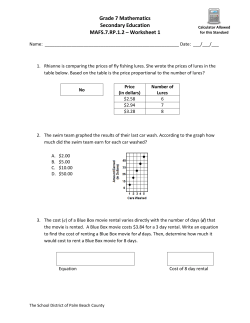
View/Open
(様式5) 指導教員 承認印 主 副 副 ㊞ ㊞ ㊞ 学 位 ( 博 士 ) 論 文 要 旨 生物システム応用科学府 生物システム応用科学専攻 博士後期課程 論文提出者 論文題目 専修 平成 24 年度入学 氏名 主指導教員 氏 名 循環生産システム学 閻祺 安藤 哲 ㊞ 副指導教員 氏 名 佐藤 令一 副指導教員 氏 名 Study on the Sex Pheromones Produced by Female Moths in the Subfamily Pyraustinae ノメイガ亜科雌蛾性フェロモンに関する研究 論文要旨(2,000 字程度) Pyraustinae is a large subfamily of the lepidopteran family Crambidae. It includes about 1,400 species in the world, and many of them are serious agricultural pests because the larvae bore into stems and fruit of plants. The female sex pheromones of more than 40 species had been identified up to date. Against males in this subfamily, however, lures baited with the synthetic pheromones often show less attractive activity than virgin female moths do. In order to make clear the communication systems in Pyraustinae species in detail and apply them for plant protection, the sex pheromones of nine Pyraustinae species have been studied. The Omphisa anastomosalis and Leucinodes orbonalis are serious pests of sweet potatoes and eggplants, respectively, in South and Southeast Asia. While major sex pheromone components had been identified as (10E,14E)-10,14-hexadecadienal (E10,E14-16:Ald) for O. anastomosalis and (E)-11-hexadecenyl acetate (E11-16:OAc) for L. orbonalis, it had been reported that male attraction of the traps baited with their synthetic lures were insufficient in the field. Therefore, we reexamined their pheromone extracts by GC-MS analyses, and found a new component, (3Z,6Z,9Z)-3,6,9-tricosatriene (Z3,Z6,Z9-23:H). Field evaluation of new lures mixed with Z3,Z6,Z9-23:H successfully revealed its strong synergistic effect on the known pheromone components, indicating improved synthetic lures for monitoring of male moths. There are 18 Japanese species in the genus Herpetogramma and most of them distribute in Okinawa islands. Their host plants are different but they concurrently inhabit a closed area. Since the mechanism of their reproductive isolation is interesting, sex pheromones of two Herpetogramma species (H. submarginale and H. basale) were examined by GC-EAD and GC-MS analyses. Mass spectra of the pheromone components and their derivatives with DMDS or MTAD indicated that females of H. submarginale and H. basale produced (Z)-13-hexadecenyl acetate (Z13-16:OAc) and (11Z,13E)-11,13-hexadecadinyl acetate (Z11,E13-16:OAc), respectively. Z13-16:OAc is a new compound identified as an insect pheromone and the synthetic pheromone attracted the males in the field, while male attraction by the synthetic pheromone of H. basale was failed. Furthermore, sex pheromones of other five Pyraustinae species were examined as follows; Palpita nigopunctalis, Pleuroptya sabinusalis, P. inferior, Spoladea recurvalis, and Eurrhyparodes accessalis. In addition to the usual GC-EAD and GC-MS analyses, GC-FT/IR analysis was conducted in the experiments with pheromone extracts from the former two species. IR spectra confirmed the configuration of double bonds and the kind of functional groups at terminal positions. Although field evaluation of synthetic pheromones of these five species was unfortunately showed no good male attraction, results of the identification indicate diversity of pheromone structures produced by Pyraustinae species.
© Copyright 2025









